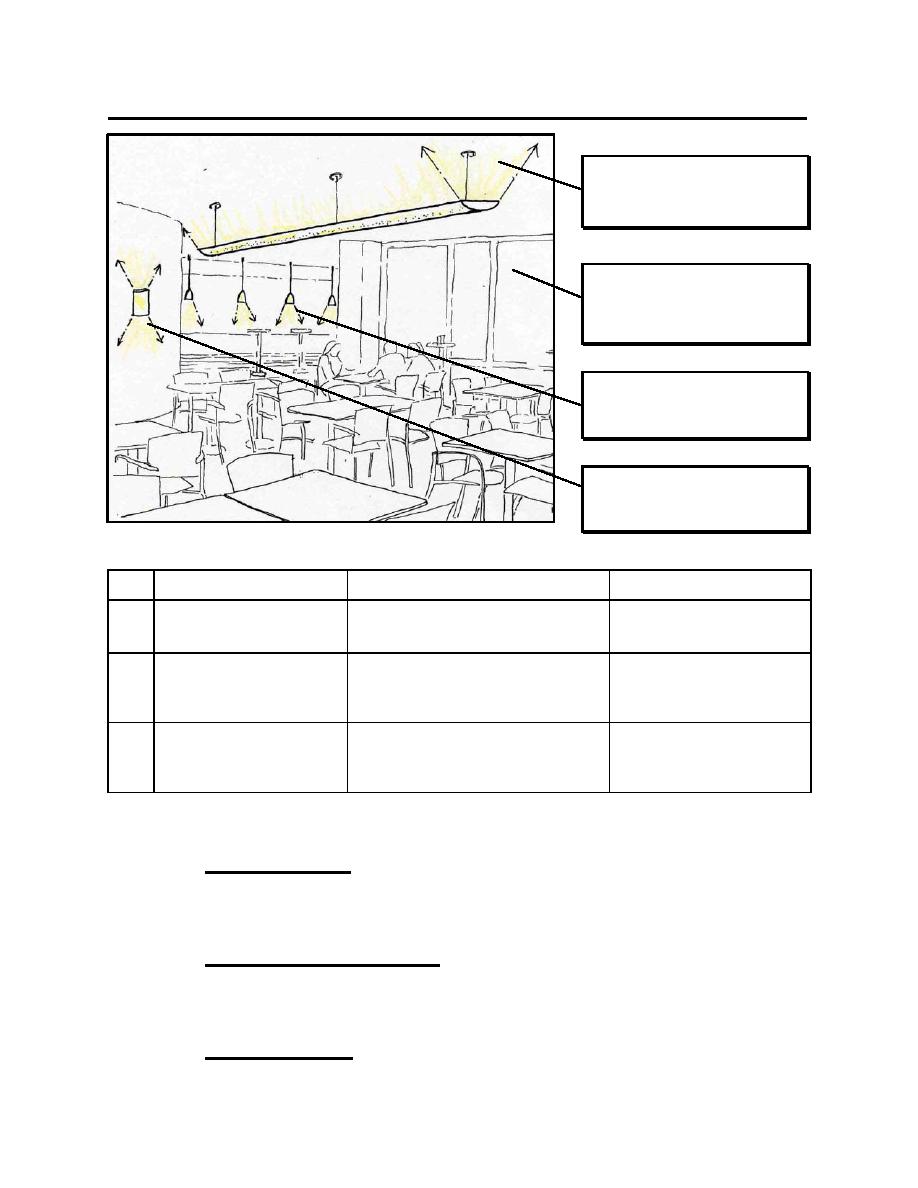
UFC 3-530-01
22 August 2006
FOOD SERVICE
Cafeterias
A
Indirect / direct luminaires light
the ceiling while still providing
a small direct component.
Daylight should be introduced
into the space, controlled, and
B
integrated with the electric
C
lighting.
Low wattage accent lighting
helps to highlight points of
interest.
Wall sconces provide surface
brightness and visual interest.
EQUIPMENT RECOMMENDATIONS:
LUMINAIRE
LAMP
CONTROLS
Linear fluorescent indirect
4' linear fluorescent T8 or T5HO
Control with daylight
A
/ direct luminaire.
lamps, 3000K color temperature, 75
sensors.
CRI+
Pendant mounted low
Low voltage, directional lamps.
Control ambient and accent
B
voltage decorative accent
lighting separately.
light.
Consider the use of
occupancy sensors.
Wall mounted compact
Compact fluorescent lamp, 3000K
Control ambient and accent
C
fluorescent sconce.
color temperature, 80 CRI+
lighting separately.
Consider the use of
occupancy sensors.
CRITICAL DESIGN ISSUES:
Color Appearance: The appearance of food served in a cafeteria should be
vivid and aesthetically pleasing. Often halogen lamps illuminate food at the
point of display. Where fluorescent lamps are used, they should be
specified with a high color-rendering index (CRI).
Modeling of Faces or Objects: The modeling of food texture and
appearance is especially important where it is displayed and served.
Directional accent light, in addition to the ambient light, highlights the food
and provides adequate modeling.
Point(s) of Interest: Accent lighting should focus attention and provide
some level of way finding and direction for occupants. Accenting signs and
6-40



 Previous Page
Previous Page
